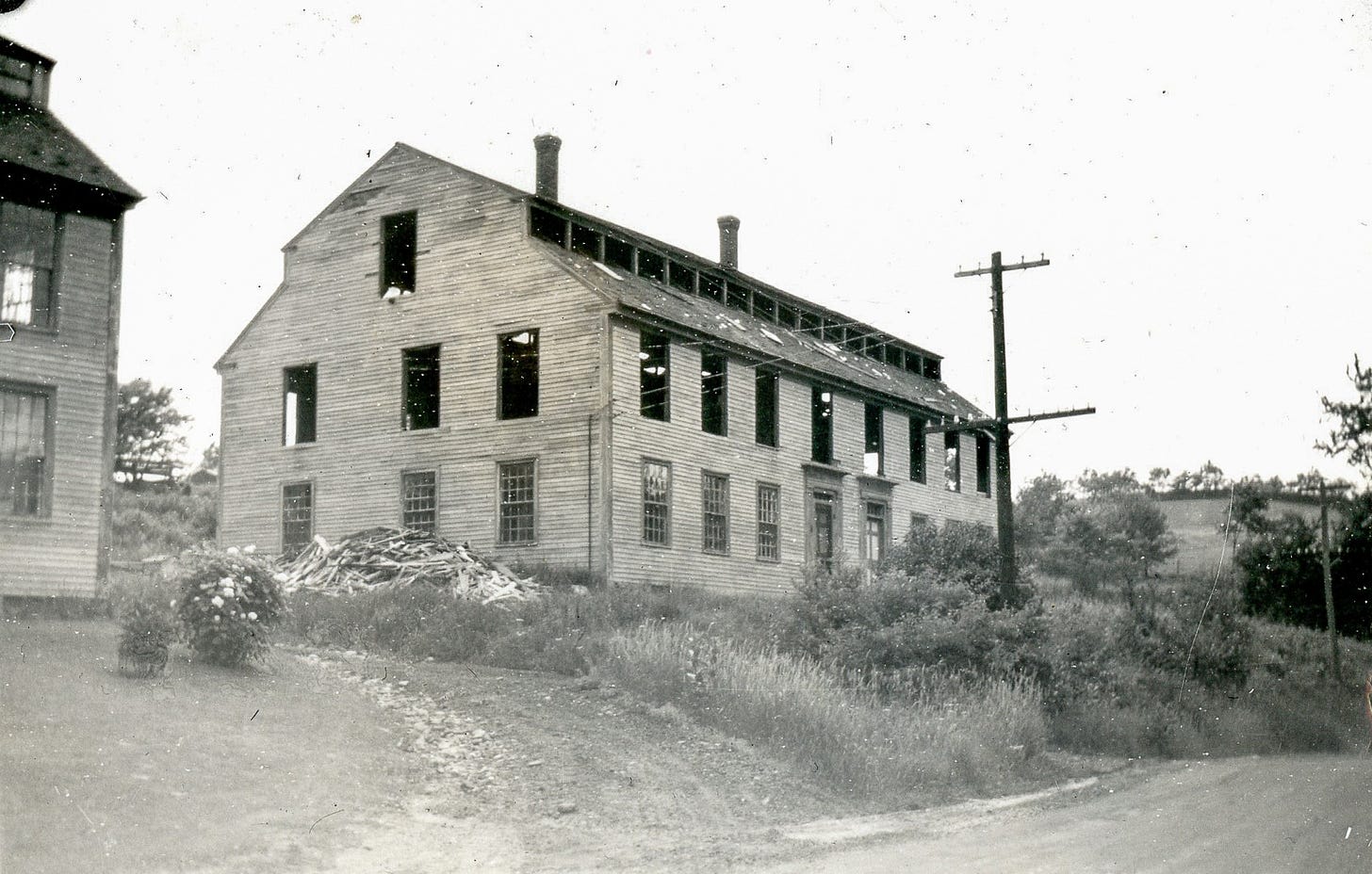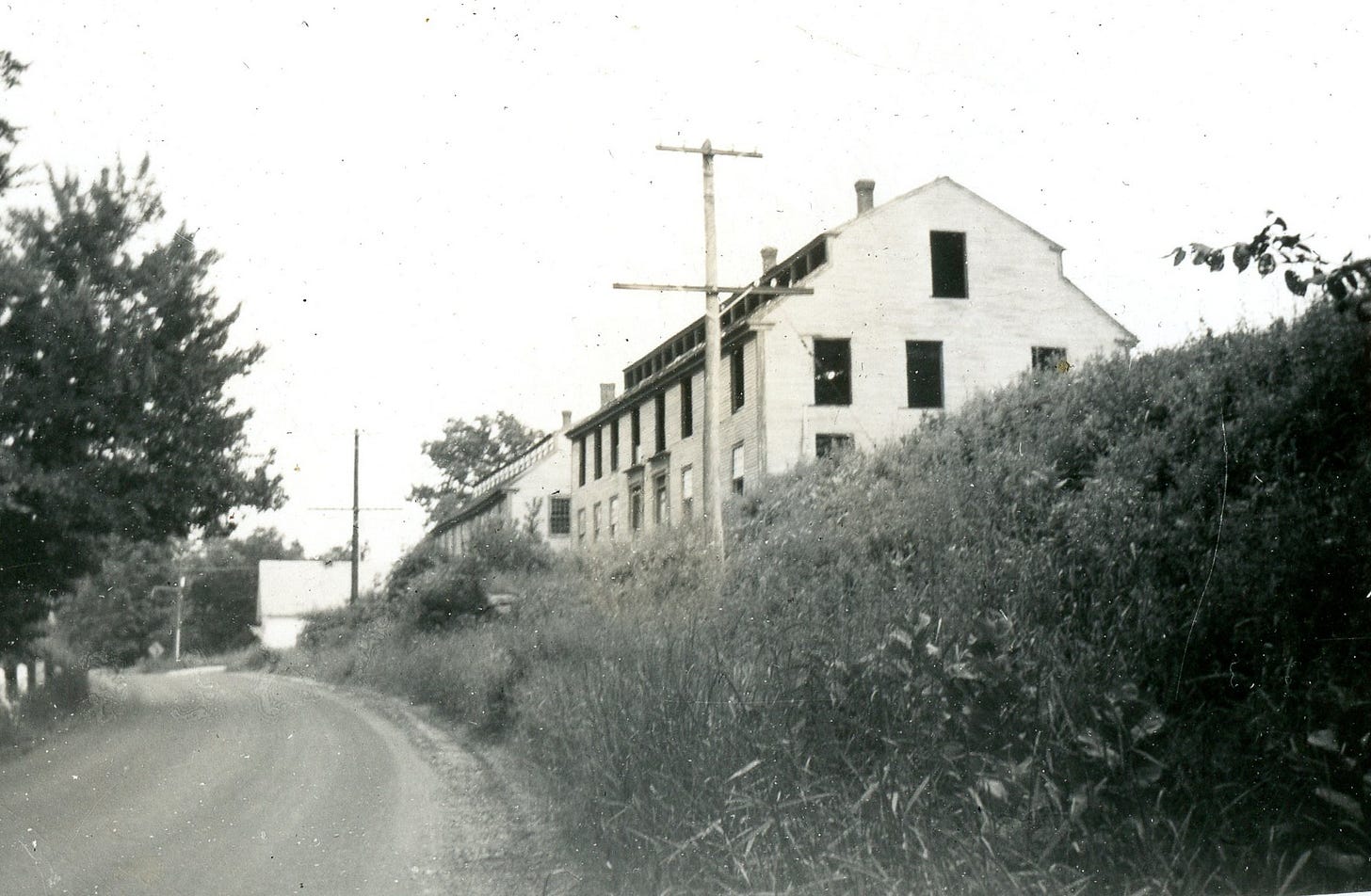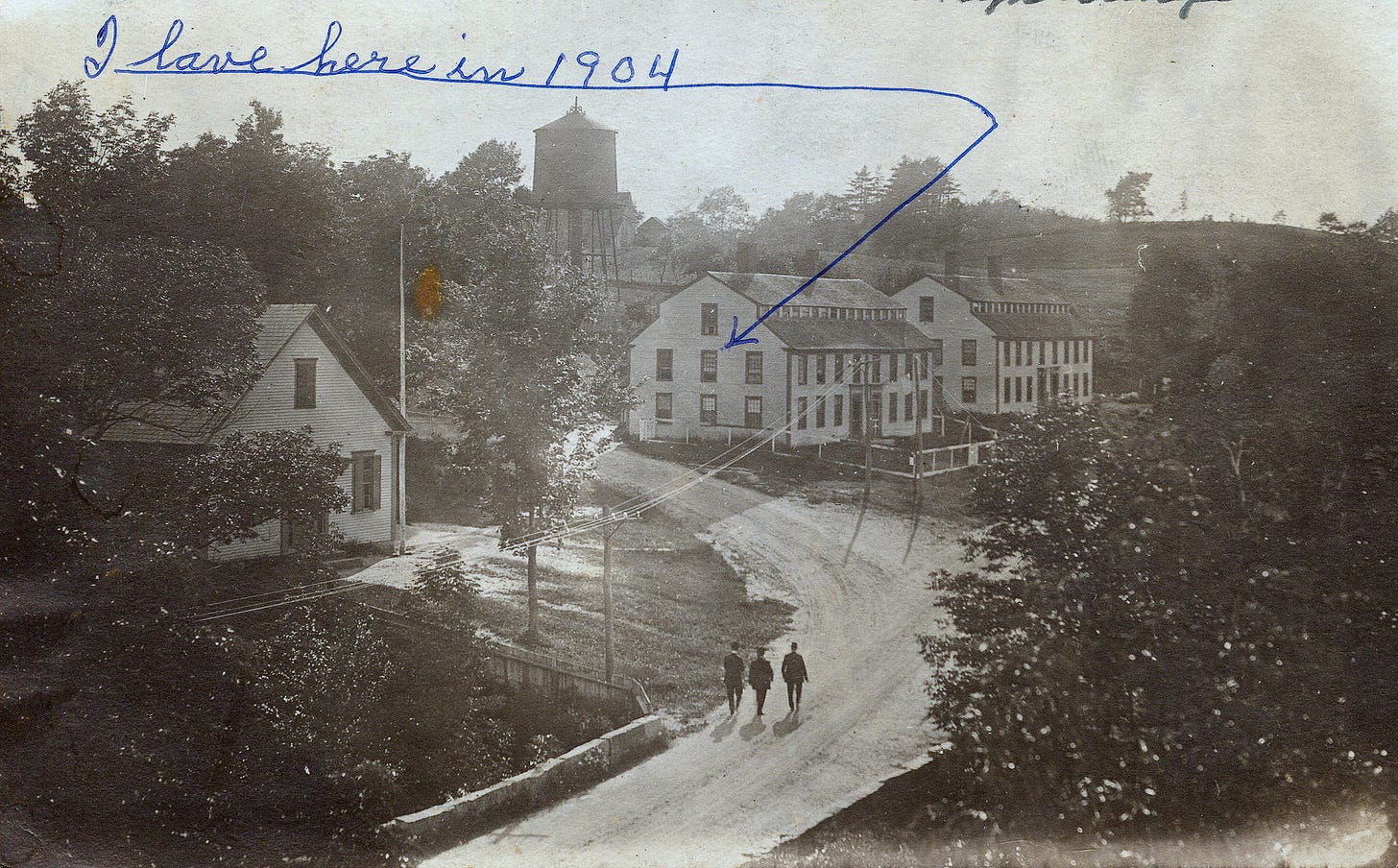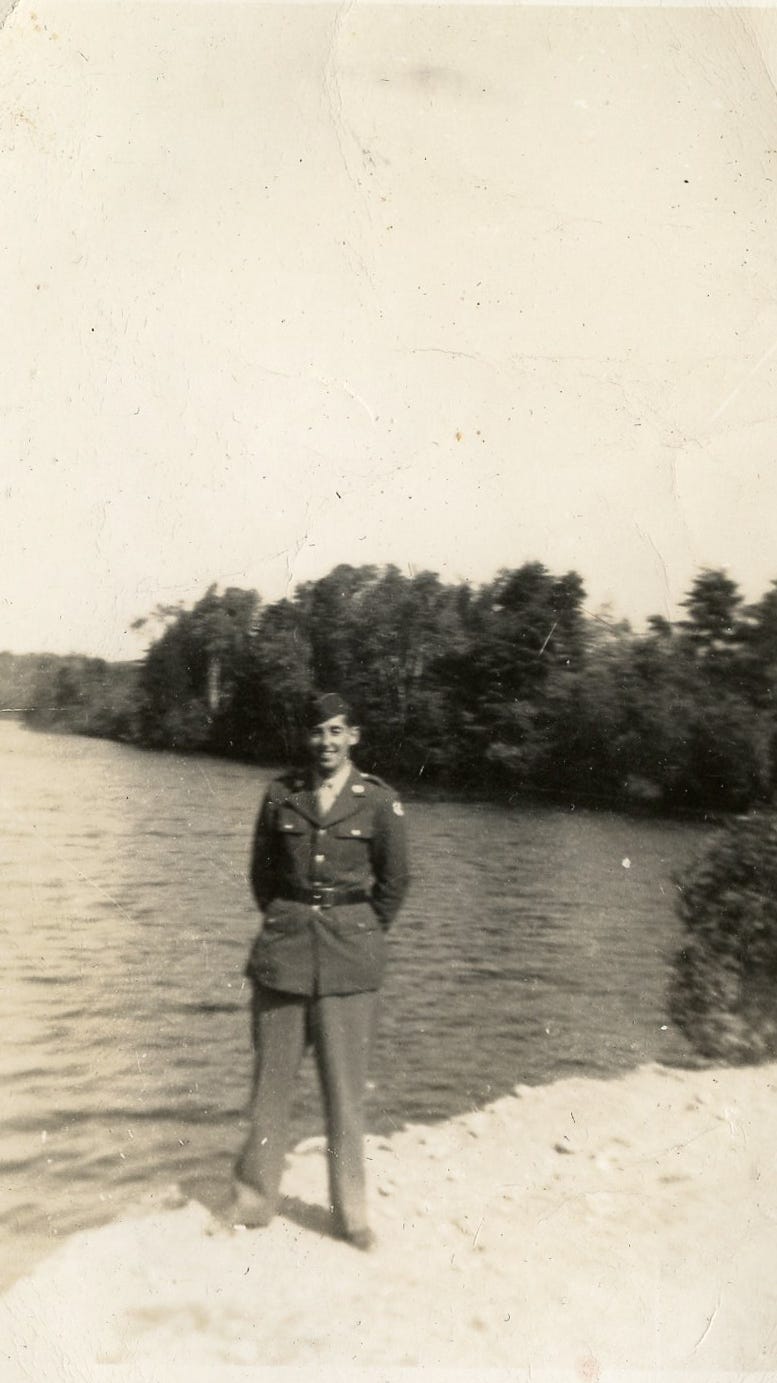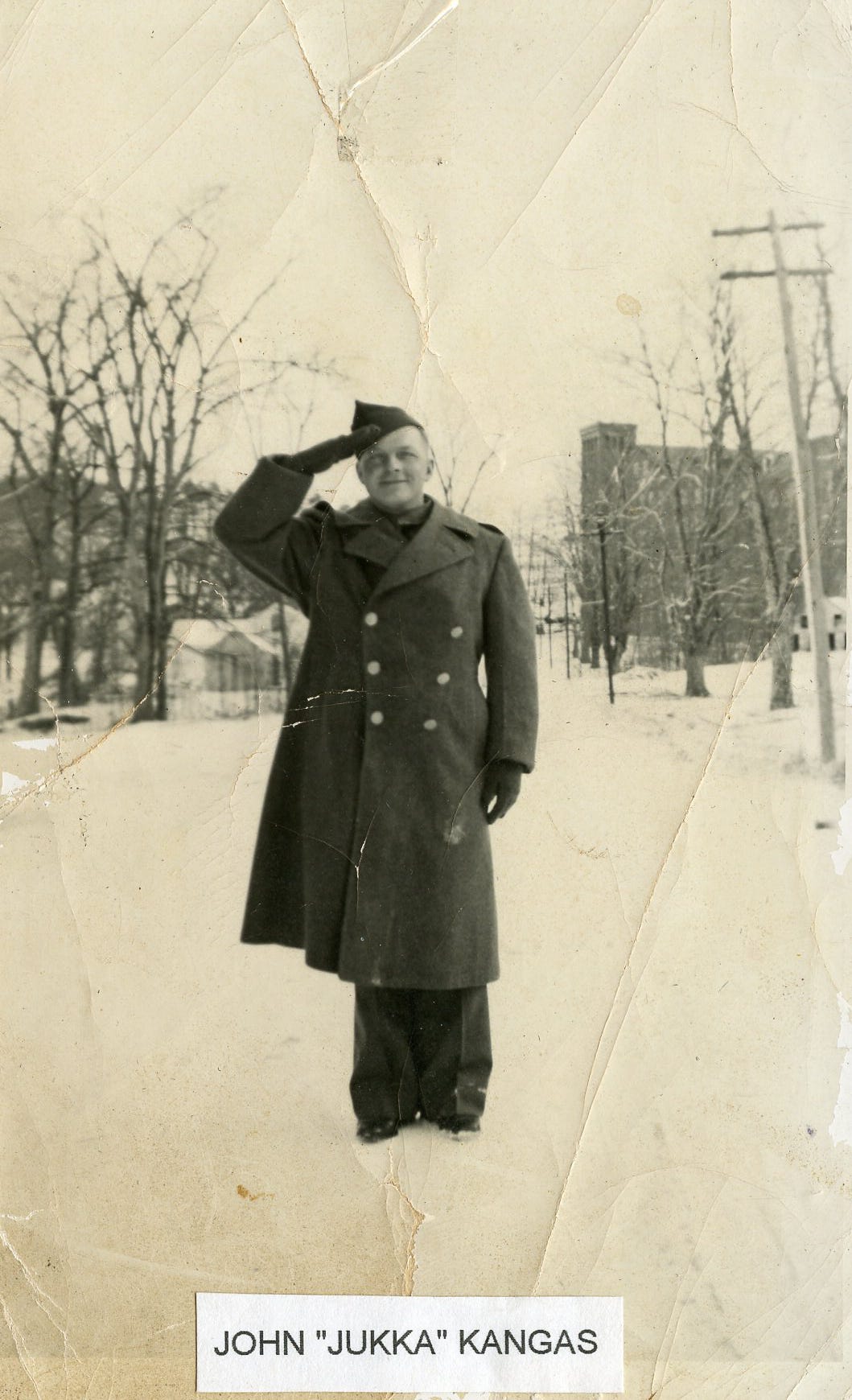These abandoned buildings are not mills
Previously I identified these buildings as abandoned mills in New Ipswich, NH. However an alert reader (Dave Barry) recognized his house in the second photo. It is visible on the left side of the photo. Dave’s home was formerly a schoolhouse located directly across the street from Warwick mill on Turnpike Road (Route 124). These photos were taken by Hazel E. Balch in September 1946. The building closest to Dave’s house was renovated and remains standing on the intersection of Turnpike and River road. It retains the same roofline.
An earlier view
A view looking down at Highbridge. The schoolhouse (Dave Barry’s home) is on the left and both buildings are visible. I assume they provided housing for the mill workers. I assume this photo was taken from the mill.
WWII Veterans
Hazel Moore compiled an album of New Ipswich WWII veterans for the New Ipswich Historical Society. As a prelude to our town’s Memorial Day celebration, we will feature a few photos each day.
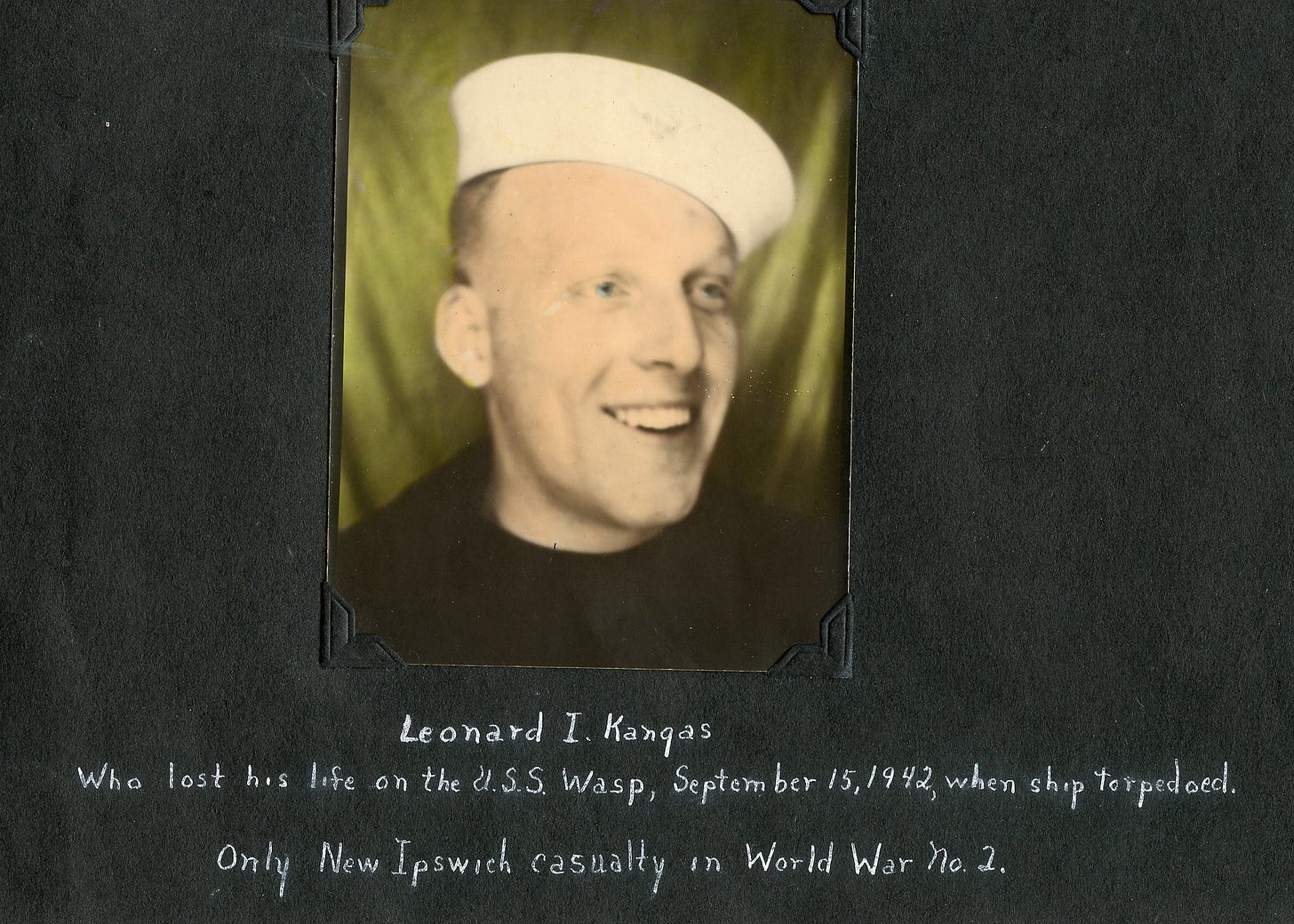
On this day - April 22, 1908
James Roger diary entry
22nd (Wednesday)
Cool morning and grew warmer during the day. David at Lorie’s in forenoon and cleaning out hen house in afternoon. Hamish on roads with Royce. I filled a Cyphers incubator for ourselves also swept the vestry for the roll call meeting tomorrow.
On this day - April 22, 1897
William Jurian Kaula diary - Montigny & Marlotte
We decided on taking a walk and set out in the morning for the next town, Montigny which is about five or more miles distant on the river Loring. The roads are splendid and we missed our bicycles – except a one part of the road which lay in a hollow in the forest of Fontainebleau that was flooded deep from the recent rains. We were able to get around by walking in the woods for about a quarter mile. The forest was not particularly interesting as the trees are not numerous enough to make it very dense. These little country towns have a Sabbath-Day stillness about them that is so different from the bustle and joyous hum of the streets of Paris. Montigny proved to be a picturesque little town with its customary church and stone houses, its mills at the dam, and the usual stone arched bridge and green meadows. Hazard was here in December and soon espied an old acquaintance Mr. Deacon who was sketching some apple-blossoms on the riverbank. Mr. Deacon was very kind and invited us to his house for déjeûner* and we accepted with alacrity. Mr. Deacon is an Englishman and has a charming villa with a couple of acres of garden and trees. With his family and surroundings it makes a most ideal home for an artist. We appreciated his hospitality very much but he was evidently glad to be able to meet a few of the English-speaking people as they are very scarce during the winter and early spring months. Mr. Deacon is a man of some wealth and is able to enjoy life without those discomforts and denials that confront the struggling young artist. We spent some time in his studio examining his studies and pictures and a number of copies of Valasquez that were scattered around the house. Then we journed on to the next town, Marlotte where H. spent a few weeks in December. This did not compare with Moret as a sketching ground as it lacked the variety. We stopped at the home of Mr. Hazleton the etcher and remained there some time looking at the great number of paintings and other works of art that fairly covered the walls. Mr. Hazelton was not at home but his wife made us remain until she could show us all the articles of interest. Mrs. H. is a sister of the famous French landscape painter Cazin and there were many examples of his works on the walls.
* déjeûner = to eat lunch



